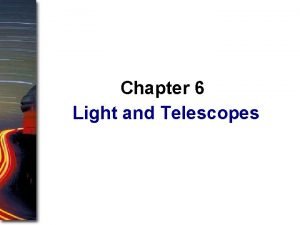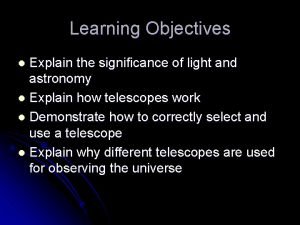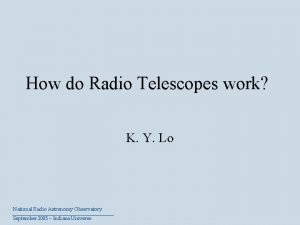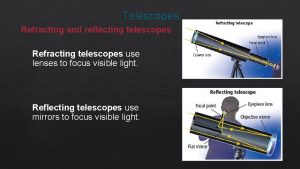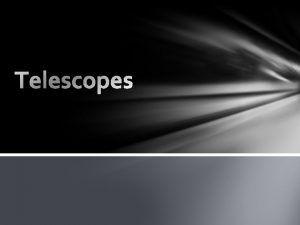Reflecting Telescopes Reflecting Telescopes Galileo was the first





- Slides: 5

Reflecting Telescopes

Reflecting Telescopes • Galileo was the first to use a refracting telescope for astronomy. It is difficult to make large refracting telescopes, though, because the objective lens becomes so heavy that it is distorted by its own weight. In 1668 Newton invented a reflecting telescope.

Reflecting Telescopes Instead of an objective lens, it uses a concave objective mirror, which focuses incoming parallel rays. A small plane mirror is placed at this focal point to shoot the light up to an eyepiece lens (perpendicular to incoming rays) on the side of the telescope. The mirror serves to gather as much light as possible, while the eyepiece lens, as in the refracting scope, is responsible for the magnification.

The reflector telescope uses a mirror to gather and focus light. All celestial objects (including those in our solar system) are so far away that all of the light rays coming from them reach the Earth as parallel rays. Because the light rays are parallel to each other, the reflector telescope's mirror has a parabolic shape. The parabolic-shaped mirror focusses the parallel lights rays to a single point. All modern research telescopes and large amateur ones are of the reflector type because of its advantages over the refractor telescope.

Advantages Reflector telescopes do not suffer from chromatic aberration because all wavelengths will reflect off the mirror in the same way. Support for the objective mirror is all along the back side so they can be made very BIG! Reflector telescopes are cheaper to make than refractors of the same size. Because light is reflecting off the objective, rather than passing through it, only one side of the reflector telescope's objective needs to be perfect.


